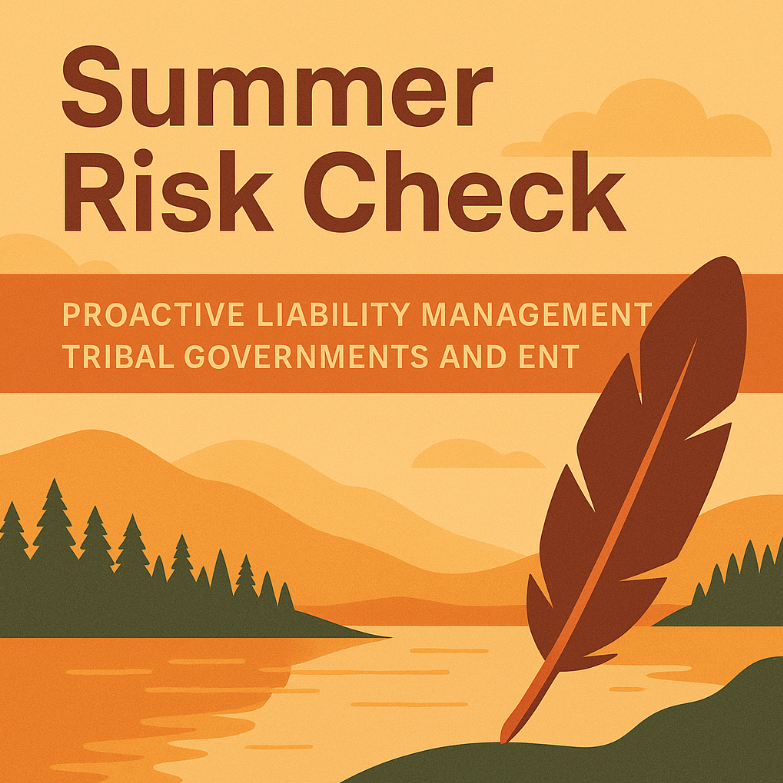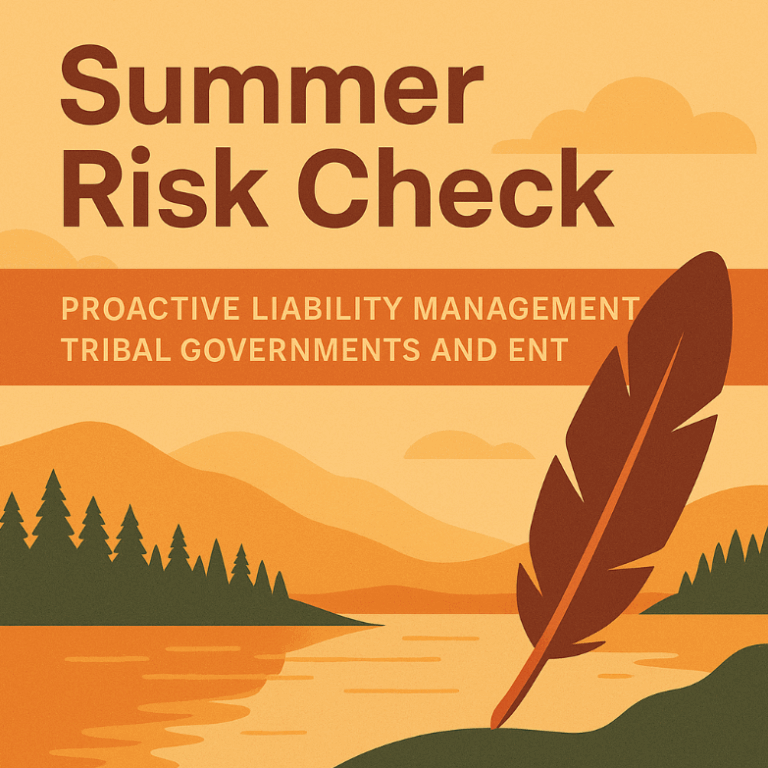As summer approaches, tribal governments and enterprises often enter a period of heightened activity—hosting community events, launching youth programs, initiating construction projects, and onboarding seasonal staff. While these initiatives build momentum and reinforce cultural presence, they also introduce increased liability across multiple operational fronts.
Now is the time for tribal leadership, HR teams, and enterprise managers to evaluate exposure and reinforce risk protections. Below is a breakdown of key risk areas to monitor—and what proactive leaders should be doing now.
Why Summer Brings Unique Risks
Summer operations stretch across a wide range of tribal functions:
- Events and Gatherings: Powwows, sports leagues, and festivals bring large crowds, vendors, and elevated general liability exposure.
- Youth Programming: Day camps and educational activities introduce supervision, transportation, and abuse prevention risk.
- Construction and Infrastructure: Capital improvements and roadwork accelerate in summer, bringing jobsite liability, third-party contractor risk, and workers’ compensation concerns.
- Seasonal Hiring: Summer hires often lack formal onboarding or coverage confirmation, creating misclassification or claims exposure.
Top Exposure Areas to Monitor

Premises Liability at Events
Ensure public events are supported by proper safety protocols, signage, fencing, and emergency planning. Coverage for third-party vendors and guests should be confirmed in advance.
Vehicle Usage and Tribal Immunity
Summer often increases vehicle use for staff, programs, or youth transport. Confirm valid driver licenses, liability coverage, and whether sovereign immunity applies to your operation.
Volunteer vs. Employee Classification
Volunteers may not be covered under your policy. Clarify in writing whether individuals are employees, volunteers, or contractors—and confirm how they’re insured.
Workers’ Compensation for Seasonal Hires
Document safety training and coverage for all seasonal employees. Ensure job descriptions and classification align with your workers’ comp policy.
Youth Program Safety Protocols
Background checks, supervision ratios, abuse prevention policies, and transportation logs are essential. These exposures are high-risk and often underreviewed.
Certificates of Insurance for Third-Party Vendors
All vendors—contractors, performers, or providers—should issue a current Certificate of Insurance (COI) naming your entity as an additional insured. Track expiration dates across the season.
What Employers Should Be Doing Now
- Review all contracts for risk transfer language and indemnification clauses.
- Audit seasonal job descriptions and confirm onboarding procedures include safety training and COI review.
- Ensure your entity is named as an additional insured where applicable—particularly for high-risk events or construction partnerships.
- Centralize COI tracking and expiration monitoring in one department or system.
- Conduct a walkthrough with your broker or risk advisor for each major event, site, or program kickoff.
Final Thought
Summer can be one of the most fulfilling seasons in tribal governance—bringing cultural vitality, infrastructure growth, and community engagement. But without proper planning, it can also be one of the riskiest.
By taking simple steps now to align documentation, insurance strategy, and on-the-ground execution, tribal leaders can avoid unnecessary losses and focus on the season’s real priority: delivering value and safety to their people.






